What is GPPA?
Based in Rio de Janeiro, the Grupo Popular Pesquisa em Acao (People’s Group Research in Action) was formed in response to traditional ways of producing knowledge (like those adopted by and legitimized through the Academy) and to contest the influences of the market and its logic of productivity.
Formed by activists and researchers who understand the importance of research that focuses on social struggles and that is based on their demands, GPPA aimed to be an alternative that simultaneously recognizes the importance of the University and aims to give it another meaning.
Founded in 2013, it faded away in 2015 due to core members relocating as well as interests and energies waning. Despite all the odds, there were a few members who persevered and continued to work with the material they had filmed. In January 2019, this material was finalized, and MARAKÁ’NÀ was published online (also a version with English subtitles).
What is this movie about?
The Maracanã stadium is not just a space for leisure. Above all, it is a space of struggle. In this documentary, the Grupo Popular Pesquisa em Ação (GPPA) explores the struggle for education, the struggle for housing, the struggle for indios1 rights, and the struggle against capital development, against the mega-events and the development model imposed from above. It is a story similar to many struggles throughout Brazil.
This video narrates the events through the use of testimonies—both verbal and visual. The project’s main objective is to analyze the practices of resistance that were developed against the FIFA World Cup 2014 in Rio de Janeiro. This analysis is contextualized with the collection of crucial historical testimonies, reports of all the violence and abuses that occurred due to the FIFA World Cup 2014.
The video is geographically centered around the area of the Maracanã stadium, one of the areas where the contradictions of the development model characterized by the state of exception came to light and where several resistance strategies have emerged.
Different struggles took place around the Maracanã stadium: for the indios place Aldeia Marakana, for the Favela do Metrô Mangueira, for the public buildings around and the social movement Não Vai ter Copa (There won’t be a world cup).
The GPPA received a small grant of a few hundred euro to support this project, and the sum was used to buy video-recording equipment.
What happened next?
Since the MARAKÁ’NÀ was filmed in 2014, many events took place on both a national and Rio de Janeiro level.
Since Dilma’s 2016 campaign for impeachment, the far right’s reaction has gained momentum in cities as well as in the countryside, with special support for politicians who stand against minorities. Racist, xenophobic, and sexist speeches have become part of the political vocabulary in public discourses and social networks, gaining wide popular support as a response to the country’s political, economic, and social crises. The rise of conservatism emerged as a reaction to the 2013 uprisings and the strengthening of the social movements that followed. Discourse against indigenous people in the countryside and in the city is supported by agribusiness entrepreneurs and parliamentarians. In cities, the idea of order by force of arms gains even more strength.
And this climate also reverberated in Rio de Janeiro.
In February 2018, Governor Pezão, in continuation of Sergio Cabral’s government, handed over the administration of public security to the Armed Forces. The Armed Forces then appointed Army General Walter Braga as intervener for public security policy in the state of Rio de Janeiro, with a security policy that intensifies the number of killings promoted by police in the state. The death toll from police action increases by 35%, which amounts to a total of 1534 deaths in the state of Rio de Janeiro alone2. The far-right speech gains supporters, leading to Bolsonaro’s unpredictable presidential election as well as the shocking ballot box victory of Wilson Witzel, an unknown judge of law with a speech that combines conservative Protestantism and militarism. The new state governor is known for upholding the “policy of killing offenders.” He publicly stated that police should “aim at the head” of any favela resident carrying a gun. In his government, there are several allegations of police executions, including one in which Witzel was present as police invaded a slum in the city of Angra dos Reis. On this occasion, the governor himself appears aboard a helicopter as civil police officers target what had been accused of being a drug selling point3. The target was, in reality, a religious tent. Compared to the previous year, and according to data from the State Institute of Public Security of RJ, the Witzel government saw a 16% growth until August. As of August 2019, 1,249 people were killed in Rio de Janeiro police actions, most of which took place in slums and outskirts. In 2018 1534 people were killed by the police. In addition, the deaths of more than one person in each police operation have become even more frequent. The number of police actions with 3 or more dead has increased by 750% since 2013, from 60 dead in 2013 to 123 by June of 20194, with the possibility of growth, characterizing a policy of extermination of the black population that lives in slums and outskirts.
The video focuses on three areas: the Aldeia Marakanã, the Metrô-Mangueira favela, and the Friedenreich Municipal School. Each of these areas has developed different stories since the video was initially recorded.
The Aldeia Marakanã: In 2016, after the end of the Olympics and the subsequent elections, the indios and supporting activists re-occupied the Aldeia5 Marakanã. In November 2016, the governor of Rio de Janeiro, Sergio Cabral (who was mentioned in the film) was arrested. He remains in the penitentiary. The former governor has accumulated convictions that exceed two hundred years in prison.
Given all this context, the Aldeia Marakanã became increasingly “forgotten” by the government, which somewhat facilitated its resistance. There was a part of the indios land that had paved and turned into a parking lot, but during the reoccupation, the indios people removed the asphalt and began a reforestation process.
Today, the Aldeia Marakanã promotes a variety of political and popular education activities. With the election of Bolsonaro in 2018, many deputies and councilors who supported him were also elected in their states and cities. From this new reality, two deputies from Bolsonaro’s party began to pursue the Aldeia Marakanã, aiming to remove the indios people by calling them vagabundos (vagabond) and accusing the occupation to be a drug selling point.
Rio de Janeiro, unfortunately, is the curral eleitoral (political stronghold) of the Bolsonaro family. This recent persecution of the Aldeia Marakanã has alarmed the social movements and activists who support the indios struggle. Today the Aldeia Marakanã remains managed by the true owners of those lands. However, it is on alert due to the recent persecution of this new government.
Metrô-Mangueira favela: The favela remains in the same situation of true poverty; it does not even have water or sanitation. The conditions remain terrible. The “victory” of part of the population, who fought to the end and prevented the evictions, continues to suffer police persecution. Most of the region’s residents, for example, are unemployed. One form of work available is to wash cars on the street. The state suppresses this work, and that is also a form of removal. Suppression such as this prevents people from having any kind of income in the locality, which, in turn, forces them to a future forced relocation.
Friedenreich Municipal School: The school is still in the same building presented in the film and it is no longer threatened with removal. However, like all public education in the country, the school suffers from the precariousness that the state promotes in order to privatize it.
Methodological Reflections
Video-making has stratified meanings and functions: it is a process of research and empowerment as well as an end product. In this, it is clear that: “a key principle in participatory visual and digital research is that ‘the means are as important as the ends’” (Gubrium et al. 2015: 26).
Aligning with current literature, the processes of participatory video making—from deciding the script through final edits—is a valuable process of collective learning and knowledge production. Through the process of collaboration, film-making has been for us a “site for reflexivity and social engagement among those involved in the process” (Gubrium and Harper 2013: 97).
However, it is clear that our video is not part of the classical tradition of participatory filming in which the outsider research team gives a camera to an insider community in effort to empower them through their use of video making (Margolis and Pauwels 2011; Kindon 2003; Packard 2008). As stated before, this sort of traditional participatory film making always inherently privileges the researcher over the researched, and it carries the risk involved with traditional participatory filming which is that of patronizing the community it aims to assist (Walsh 2016). We go beyond the need “to explore reflexive ways that enable [the researcher] to, ‘join with another, to see together without claiming to be another’” (Kindon 2003: 146).
We can no longer see the distinction between researcher and participants, between outsiders and insiders. In making the video, we all are insiders, we all are researchers of meaning, making knowledge that supports ourstruggles. We are the community involved and we are the researchers. We use our cameras to narrate and analyze the events that we witnessed and to which we contributed.
We had no interest in ‘giving the camera’ to participants as an act to empower them (Kindon 2003; Gubrium et al. 2015). We decided that person most skilled at recording would be the one to record. Our approach works to minimize the time spent and optimize the resources available. Our approach also recognizes how everyone has a different role in the collective process. We had a camera person, but filming and producing the video was collective and participatory: GPPA members decided together the settings, the shot, the editing; we also discussed this with the interviewees, giving voice to a ‘collective view’. Though we happily delegated the act of filming to the ‘more skilfull’ in the group, “more skillful” did not mean “more powerful.” Crucially, we valued the process of deciding, collectively, how and what to film. The video is our testimony and our analysis. It is a public and collective account of the knowledge that we gathered and the ways in which it was produced.
The process of ‘preparing the script,’ in particular, is a collective- and inter-subjective act of data and information gathering and sharing. We often drew from material that individual group members had, including previous conversations, interviews, events, other visual material, and ethnographic data. Preparing the script was also a dialogic. collective analysis, and the results of it are in the video: in its structure, the narrative choices, the case study selection, etc.
GPPA members are all part of the same movement. They share similar but not exact perspectives on the event and different research experiences, guaranteed richness, complexity and cohesion in the analysis process. This collective analysis shaped the filming and the edition process.
As a final product, the video is not data meant to be used in future research (Gillian 2001). Instead, it is our analysis of the forms of resistance to the city of exception, and it is a moment in which the different perspectives of the GPPA members are collected and take voice. Ours is a video that produces movement-relevant theory (Bevington and Dixon 2005; Walsh 2016). It is a choral narration and an analysis of events, emerging out of a shared perspective that unites different struggles—struggles of and for content and location—in order to assume a wider and broader stand against capitalism.
Thus, in the same way that the title, MARAKÁ’NÁ, indicates a collective subjectivity, the video itself works to evoke the dimensions and perspectives that different struggles share. Moreover, MARAKÁ’NÁ is an act of dialogue, and the processes involved in making it assumed social functions for activists. Sharing and researching with activists outside GPPA, MARAKÁ’NÁ and the work it involved has increased connections and exchanges among the different struggles we entered in contact with. In that way, the making the video became a “social intervention practice” (Margolis and Pauwels 2011: 183) within our context of resistance.
Beyond embracing this function of the video to build networks among local activists, we also aimed at using it as a means to build solidarities (Featherstone 2012; Brem-Wilson 2014).
To do so, we took part in a tradition of militant videos in which, “unlike in human rights videos, suffering bodies were not represented as helpless victims. On the contrary, activists sought out, watched repeatedly, even valorised, unruly and insubordinate bodies, especially those confronting state violence” (Razsa 2014: 497).
We called for solidarities in three different forms.
First: Our video is a historical testimony that is rich with information, With English subtitles, it is and has been a call for national and international support for our struggles, as it builds a collective international subject of ‘movement of movements’ (Martes and Bello 2004). Despite taking a very local form in the area of Maracanã, these struggles are shaped by and fighting against international and neo-colonial actors and dynamics.
Second: We contributed to the exchange of practices of resistance on which wider solidarity among activists is grounded. We were indeed aware that video play an important role in “catalyzing the close re-enactment of tactics from elsewhere […]. Video [i]s important for its capacity to document the struggles of movements elsewhere, including making their tactics and strategies available to activists in [other contexts]” (Razsa 2014: 499).
Third: We resonated with other struggles in effort to construct new political subjects (Razsa 2014), “reach[ing] beyond merely voicing concerns to those in power, towards imagining, reflecting and constructing other ways of being and living in the world” (Walsh 2016: 4).
Our video-making breaks with the tradition of ‘expert’ video-making or ‘external’ narratives and, thanks to our involvement and creation of solidarities, it becomes an activity that is intertwined with protesting (Razsa 2014). Our video-making extends and prolongs the direct actions we narrate: video-making, as a process and as a final product, is a direct action itself. Direct actions are actions taken in the public sphere without State mediation and with the objective of building social change (Graeber 2009). In our case, even though we had some funding, we were and acted completely independently to build the video as we wanted, exemplifying in it our aim to build social change through our militancy. As a medium, a video might imply a passive public, but ours does not. Our video is a call for action.
A struggled conclusion
Experiences such a s MARAKÁ’NÀ and participatory video-making can help t o narrate a reality that is different from the one narrated by the media, and narrating a different reality works to construct another way of viewing (Pink 2001a, 2001b; Margolis and Pauwels 2011) and to propose a new ‘gaze’ on the world (Kindon 2003, 2015b). Under a militant approach, this new ‘gaze’ can assume a stronger political stance that challenges the one built by capitalism.
Despite our clear militant aims, however, finishing and releasing MARAKÁ’NÀ took longer than expected or anticipated. This was due to a lack of resources as well as GPPA’s internal collective dynamics. Because one person had the responsibility to finish editing, and because all of the material collected was left with that one person, the whole group was powerless in deciding when and how to finalize the video.
This challenge underscores how vital it is for activists to have the resources needed for research.
Making this video happen, or making a similar project happen, requires what Haiven and Khasnahish (2014) call ‘opening times’ and ‘opening spaces’. It is necessary to create
moments in which it is possible to stop performing day-to-day business and to be able to dedicate time to education and elaboration. At the same time, it is also necessary to have safe spaces in which different individuals and groups can meet to share and debate.
For an activist, research is an activity that necessarily comes in third. It comes after having to work to survive. It comes after daily commitments to activism and organizing. Research often requires a commitment that can be too demanding in terms of time as well as resources.
Indeed, time commitment and resources are generally a problem in Participatory Action Research and militant research approaches, where research-activists do not generally have the kinds of privileges, like those often seen in academia, that support or enable knowledge production (Lopez and Fernandes 2012; Brem-Wilson 2014; Halvorsen 2015). Solidarities built with, and possibilities created by, critical academic institutions can help open cracks through which resources can flow, supporting the production of more movement-relevant theories. Such knowledge-production would—and must—be the obvious consequence of the independent and autonomous nature of militant experiences. Such knowledge-production would—and must—be a form of direct action that instigates us all towards meaningful social change.
1 We use the term indios to refer to indigenous people. This is a form of respect as it is the term preferred by indigenous people that we worked with.
2 https://noticias.r7.com/rio-de-janeiro/rj-homicidios-caem-7-e-mortes-em-acoes-policiais-crescem-35-em- 2018-19012019https://noticias.r7.com/rio-de-janeiro/rj-homicidios-caem-7-e-mortes-em-acoes-policiais-crescem-35-em- 2018-19012019
3 https://oglobo.globo.com/rio/helicoptero-com-witzel-bordo-metralhou-tenda-de-oracoes-em-angra-dos-reis- 23648907
4 https://g1.globo.com/rj/rio-de-janeiro/noticia/2019/10/16/acoes-policiais-com-3-mortos-ou-mais-no-rj-batem- recorde-em-2019.ghtml
5 Aldeia is the Portuguese term for indios village/community.
These reflections were first shared during the Crosscuts Environmental Humanities Festival for Film & Text 2019. Video recording of the presentation can be found HERE.
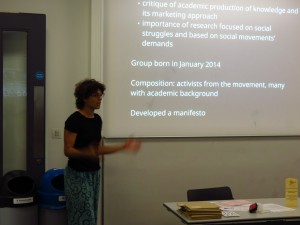
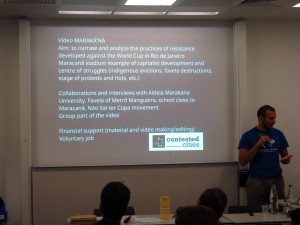
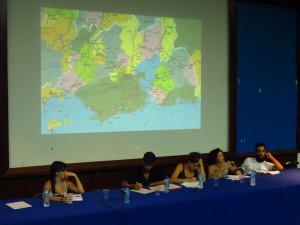

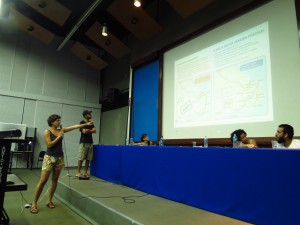
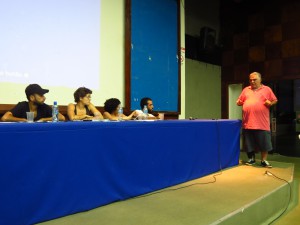
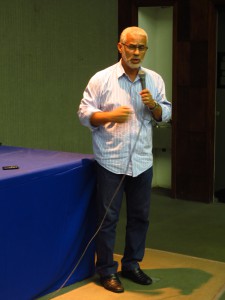

Recent Comments